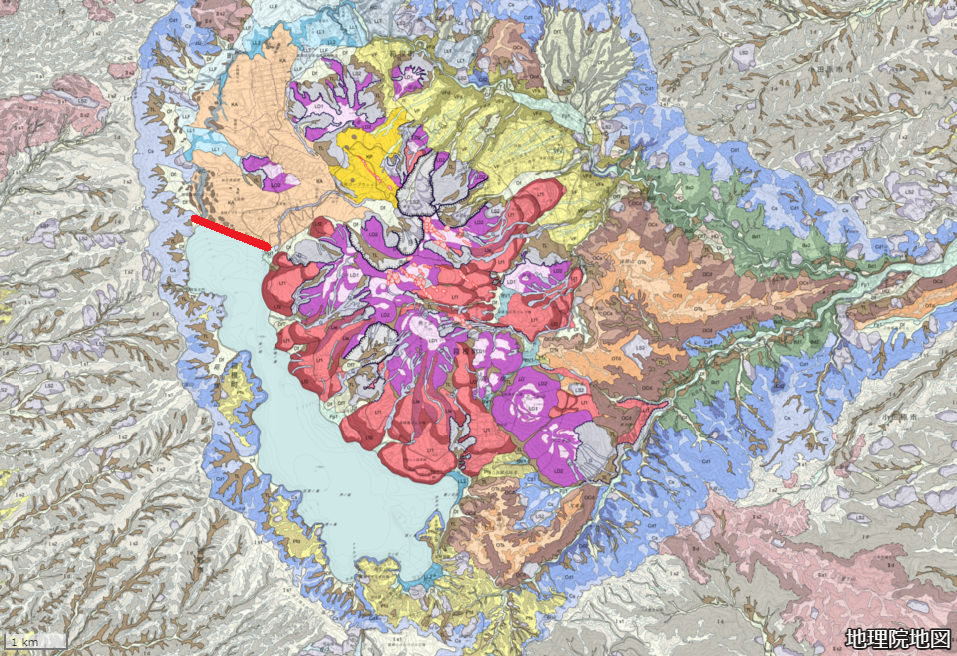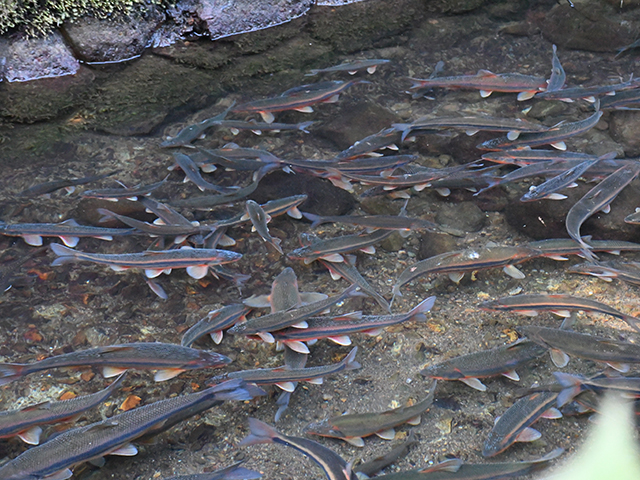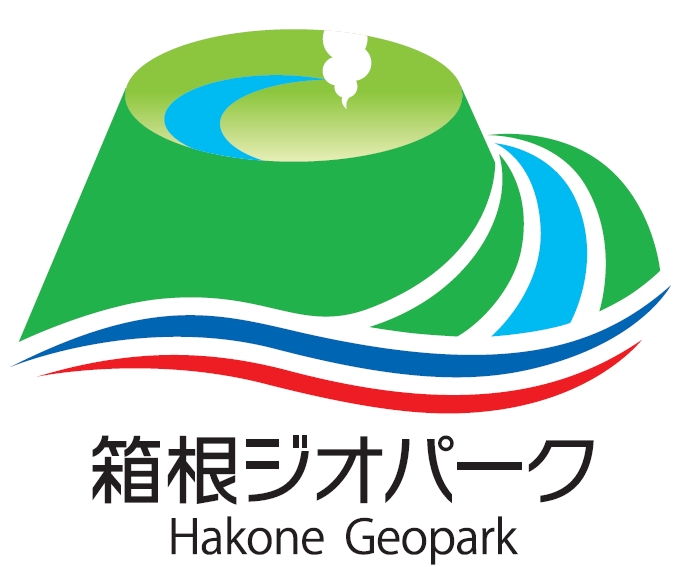Formation of Lake Ashi (Ashinoko)
Lake Ashi is a caldera lake formed inside the caldera of the Hakone Volcano and at the same time, it is a dammed lake that expanded its area by deposits from the sector collapse(volcanic collapse) that occurred when Mt. Kamiyama erupted about 3,000 years ago. The water of Lake Ashi was originally the source of the Hayakawa River, but now flows out to Shizuoka Prefecture via the Hakone irrigation canal, which was completed in the Edo period. The outflow into the Hayakawa River is controlled by the Kojiri Floodgate built at Sakagawaguchi, which is the lowest downstream area of Lake Ashi (the highest upstream area of the Hayakawa River), and except during heavy rain, the water from Lake Ashi does not flow into the Hayakawa River.

The red line in the figure indicates the dammed area from the sector collapse(volcanic collapse) of Mt.Kamiyama.
(Source: Modified Geospatial Information Authority of Japan volcanic land condition map “Mt. Hakone”)
Fish of Lake Ashi (Ashinoko)
Lake Ashi is currently inhabited by smelt, largemouth bass, and other various species but many of them were imported from within Japan and abroad after the Meiji era. Native to North America, largemouth bass was first released into Lake Ashi in Japan. Native to Hokkaido, the landlocked sockeye salmon (Himemasu) was first transplanted from Lake Towada in 1909 and is said to be the southern limit of its habitat. On the other hand, the Japanese dace that originally lived in Lake Ashi has “Hakone (Triborodon hakonensis)” as its scientific name, and is a fish of academic significance and was named based on specimens from Lake Ashi.
 Landlocked Sockeye Salmon (Himemasu) Landlocked Sockeye Salmon (Himemasu) |  Dace (Scientific name: Triborodon hakonensis) Dace (Scientific name: Triborodon hakonensis) |
